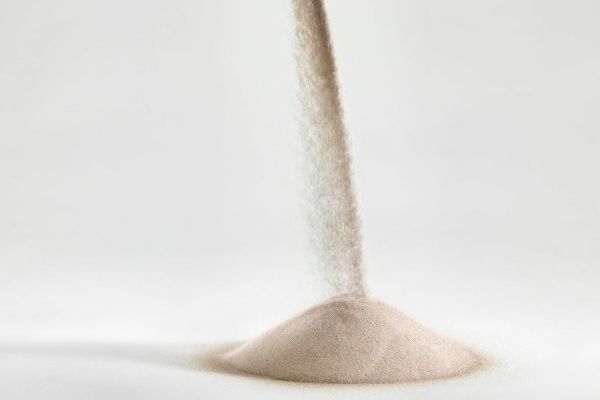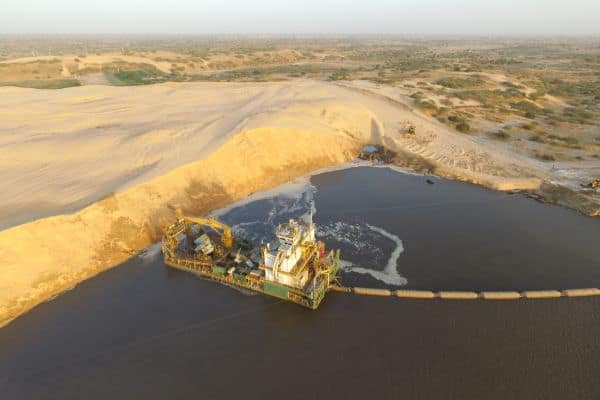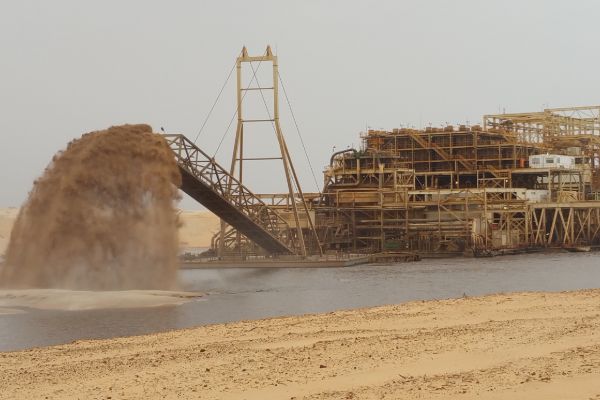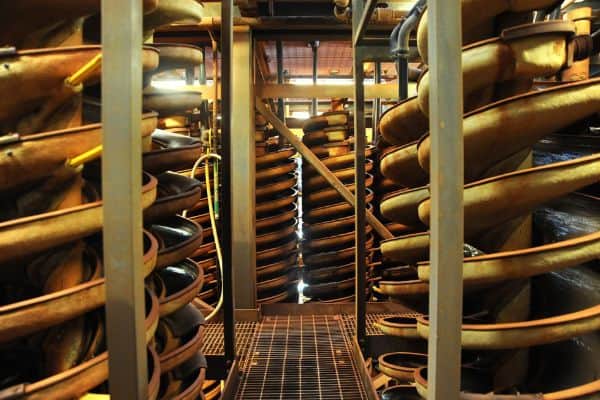Zircon, also known as zircon silicate (ZrSiO4), is found in ancient mineral sand deposits. In the form of crystal sands, zircon is typically brown, but could also vary from colourless to yellow-golden, pink and red to blue and green.
Zircon is one of the two core product streams from ‘mineral sands’, the other being titanium minerals (ilmenite, leucoxene and rutile).
The majority of zircon sand is mined in Australia and the African continent. Current annual global production is in excess of one million tonnes. Almost half of the zircon produced globally is consumed by China, with other significant consuming regions including Europe, North America, Asia-Pacific and India.
The main use of zircon sand is its conversion into flour, opacifier, fused zirconia, zirconium chemicals, chemical zirconia and zirconium metal. Zircon sand is directly used in foundry applications and refractories and other minor applications.

Deposits of mineral sands are formed along ancient coastlines where the heavier minerals were concentrated by wave and wind action. Most mineral sand deposits are found in unconsolidated fossil shorelines several hundred metres to tens of kilometres – or occasionally hundreds of kilometres – inland from the present coastline. Major deposits are found in Australia and Southern Africa, but also in South and Southeast Asia, China, East and West Africa, Ukraine and in North and South America.
The heavy mineral content of these sand deposits can range from 0.5% to >20%. Similarly, the zircon content varies from deposit to deposit, ranging from as little as 1% to as much as 50%.

Major sand deposits are found in Australia and Southern Africa, but also in South and Southeast Asia, China, East and West Africa, Ukraine and in North and South America.
Mining of mineral sands can be by both dry mining and wet (dredge) mining methods. In some countries, mineral sands products, principally titanium minerals, are also recovered from hard rock mining methods.
Dry mining is suitable where deposits are shallow, contain hard bands of rock, or are in a series of unconnected ore bodies. Dry mining operations use trucks, excavators, scrapers, loaders or dozer push techniques to recover ore to a mining unit plant. This then conveys the ore to a wet concentrator plant, by slurry pipeline or overland conveyor.
Dredge mining is best suited to ore reserves below the water table. Dredges mine in artificial ponds, pumping ore in slurry form to a floating concentrator.
Wet concentrator plants are designed to produce a high grade of heavy mineral concentrate (about 98% heavy mineral content). The ore is washed through a series of spiral separators to separate the heavy mineral sands from the lighter quartz and clay impurities. The heavy mineral concentrate contains a mix of valuable heavy minerals in different assemblages, as well as residual clays and other non-valuable heavy mineral components and waste. Following wet concentration, the heavy mineral concentrate is separated into its component minerals (ilmenite, rutile, leucoxene, zircon and monazite) in a dry processing circuit, exploiting the heavy minerals’ different electrostatic, magnetic and density characteristics. Zircon has low magnetic susceptibility and electrical conductivity whereas ilmenite has high magnetic susceptibility and rutile has high electrical conductivity.
Zircon concentrate is dried and cleaned by further electrostatic and gravity separation (to reduce the TiO2 content) to 65% ZrO2 + HfO2, the other principal component being SiO2. Important impurities include Fe2O3, Al2O3 and TiO2.
Zircon is also supplied as a lower-grade concentrate, e.g. from Southeast Asia (Indonesia and Vietnam), with zircon content ranging from 65% to 85% (average 75%). Most zircon concentrate is supplied to China for further processing.

Mining of mineral sands can be by both dry mining and wet (dredge) mining methods.

The ore is washed through a series of spiral separators to separate the heavy mineral sands from the lighter quartz and clay impurities.
Zircon, also referred to as zirconium silicate (ZrSiO4), is a co-product from the harvesting and processing of ancient heavy mineral sand deposits. Found mainly in Australia and South Africa, zircon can be used either in its coarse sand form or milled to a fine powder. Its properties ensure that it is used in many everyday products, including ceramic tiles and medical implants, as well as having major industrial applications.
Zircon can be processed to create zirconia by melting the sand at very high temperatures to form molten zirconia, also known as zirconium oxide (ZrO2).
Zirconium, another derivative of zircon, is the chemical element Zr in the Periodic Table and takes the form of a silvery grey metal. As the 18th most abundant element in the earth’s crust, it commonly occurs in the mineral zircon in silicate form and, less frequently, in the mineral baddeleyite in oxide form.
Zircon has a theoretical content of 67% zirconia and 32% silica and it can typically contain a small percentage of hafnium in the range of 0.2 to 4%.
Zircon sand (zirconium silicate) is mined from mineral sand deposits.
Used mainly in the ceramics industry, zircon flour is manufactured by milling zircon sand.
Find out how zircon, used as an opacifier, provides high whiteness and brightness in ceramics.
There is a wide range of zirconium-based chemicals.
Zirconia, found naturally in baddeleyite, is also chemically derived from zirconium.
Zirconium, a silvery grey metal, is the chemical element Zr in the Periodic Table.
Zirconium sponge is used mainly in the nuclear industry.
A summary of the unique physical properties of zircon.